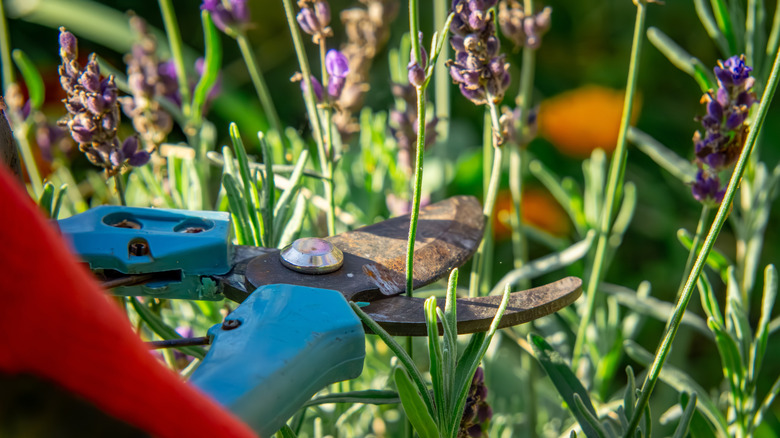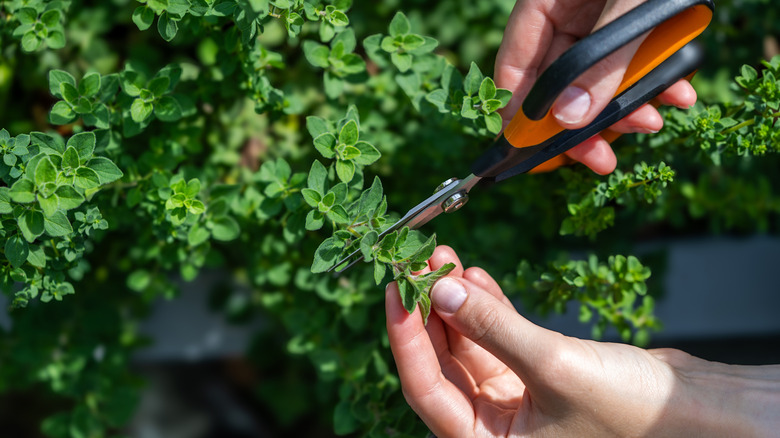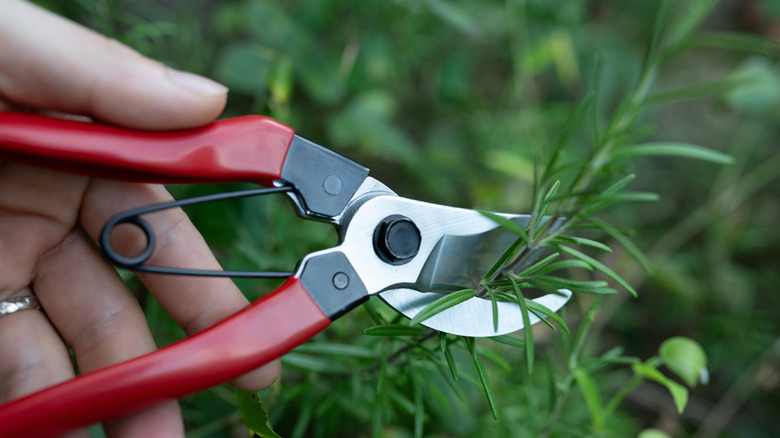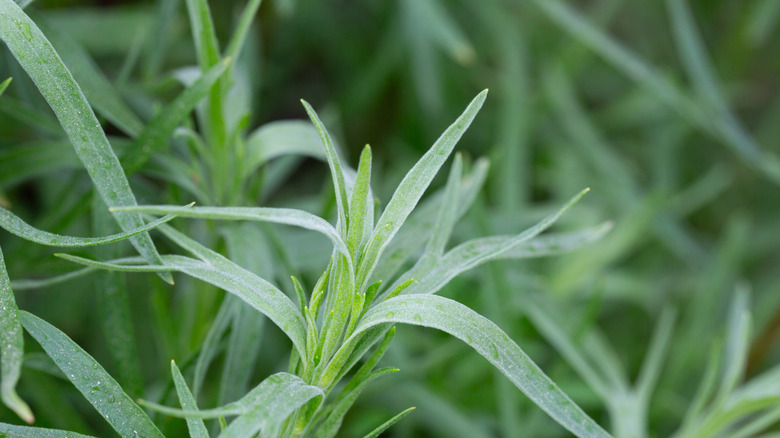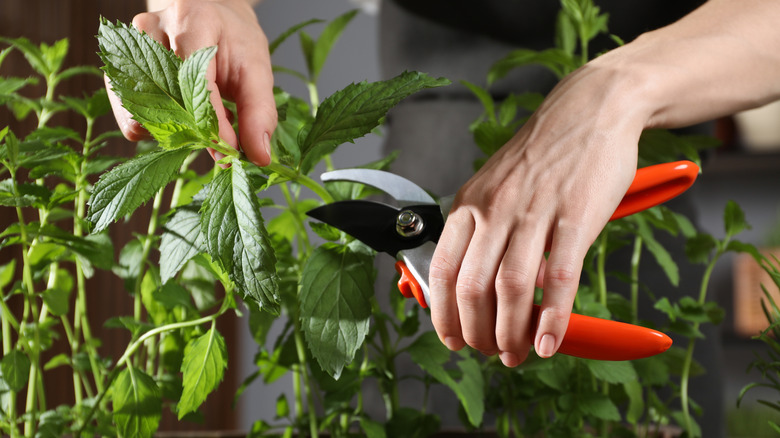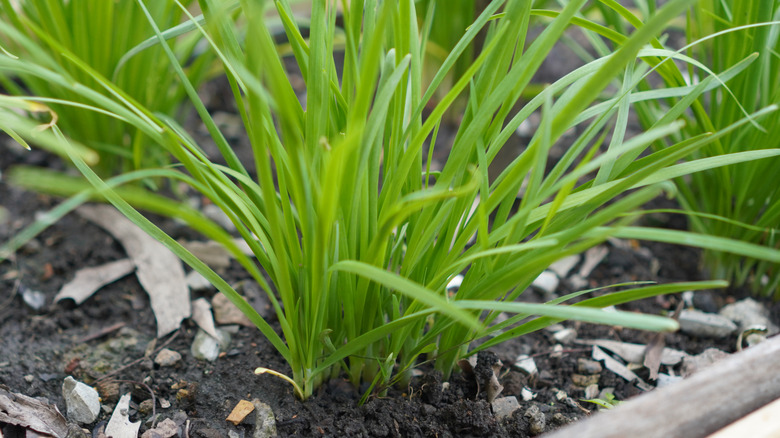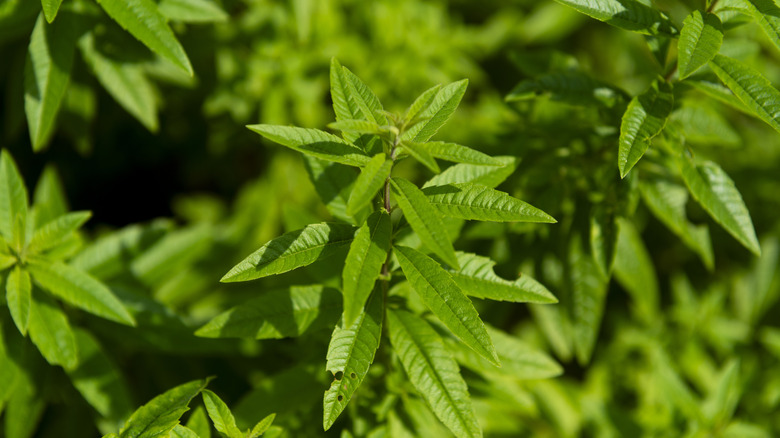9 Herbs You Should Always Prune In The Fall
With the first day of fall just around the corner, it's time to start checking off your gardening to-do list. If you already have fully mature plants by this time, specifically if you are growing an herb garden, the fall season may call for some tidying up. Plants like oregano, rosemary, and sage are just some examples of herbs that need some light pruning before winter comes around. This step will help prepare them to buckle down for the cold months.
Not only will a light pruning help these perennials extend their lives past the winter, but it can also prevent them from growing too leggy or woody. You will want to be cautious with your level of pruning, as a too-heavy session may end up promoting too much new growth that can't mature in time to survive the winter. The rules of thumb are to keep it light and to stop pruning completely at least eight weeks prior to your zone's first frost date.
Lavender
One of the more woody herbs, lavender (Lavandula) requires regular pruning to keep the plant healthy and strong. Lavender should be pruned at least once a year, and late summer to early fall is a good time for a final, light prune, especially if the flowers have started to fade. When pruning lavender, make sure to cut above any new leaf growth, not below. To help your plant better survive the winter, make sure to also remove any dead or damaged branches that could easily break due to snow or ice.
Oregano
Pruning oregano (Origanum vulgare) in the late summer or early fall will not only help the herb prepare to survive the winter, but it will also get rid of any woody stems that are causing overgrowth. Note your USDA Hardiness zone, because while oregano is typically grown as a perennial plant, it can be grown as an annual in zones with cold winters, like 4 and below. To prune oregano, make your cuts right above leaf pairs or at the base.
Sage
As anyone who has grown sage (Salvia officinalis) will know, this herb can get extremely leggy if not pruned frequently enough. Though you don't want to prune your sage heavily in the fall, you can give it a light trim to remove any dead or damaged sections to boost its growth. Make sure to cut off any weak stems, as they most likely won't make it through the winter. At this time, your sage plant might have fading blooms, which you can also remove.
Thyme
Unlike most herbs, thyme (Thymus vulgaris) is a plant you can actually prune before and after the first frost. Before the frost, you can give your plant a very light trim, making sure to cut back any woody sections. This will help strengthen the plant to keep it hardy over the winter. After the first frost in late fall, you can cut off about 1/3 to 1/2 of the oldest stems of your thyme plant.
Rosemary
While you can prune rosemary (Rosmarinus officinalis) in the early fall, it's not recommended to prune this herb past September. Pruning too late can encourage new growth. These new stems won't be mature in time for the winter, making them unable to withstand the cold. In the early fall, you don't want to trim more than 1/3 of the plant. Be sure to remove the tips rather than the branches.
Tarragon
As another perennial herb, tarragon (Artemisia dracunculus) should be lightly cut back in the fall season to be prepared for winter. This can be done at least a month before your area's first frost date or around mid-September. For the end-of-season pruning, cut your tarragon down to about 4-inches tall to protect it from the cold of winter.
Mint
As a perennial, mint (Mentha) plants require some light pruning before the start of winter to ensure they remain sturdy during the colder months. Before the frost, you can cut your mint down to just a few inches, which helps the plant prioritize growing its roots to better survive the winter.
Chives
As you prepare your garden for winter, don't forget to cut back your chive plants (Allium schoenoprasum). In the autumn, chive leaves will typically begin to die back, which is their own version of self-pruning for the winter. You can help prepare them for the cold months by cutting back the plant close to the ground. These sturdy perennials will grow back from bulbs in the spring.
Lemon verbena
If you live in a warmer climate, or USDA Hardiness Zones 8 and up, your lemon verbena (Aloysia citradora) will most likely be a perennial. This means you can give it a light prune, removing any excess blooms if you don't want falling seeds to grow new plants. Make sure to do this at least four to six weeks before your zone's first frost date.

